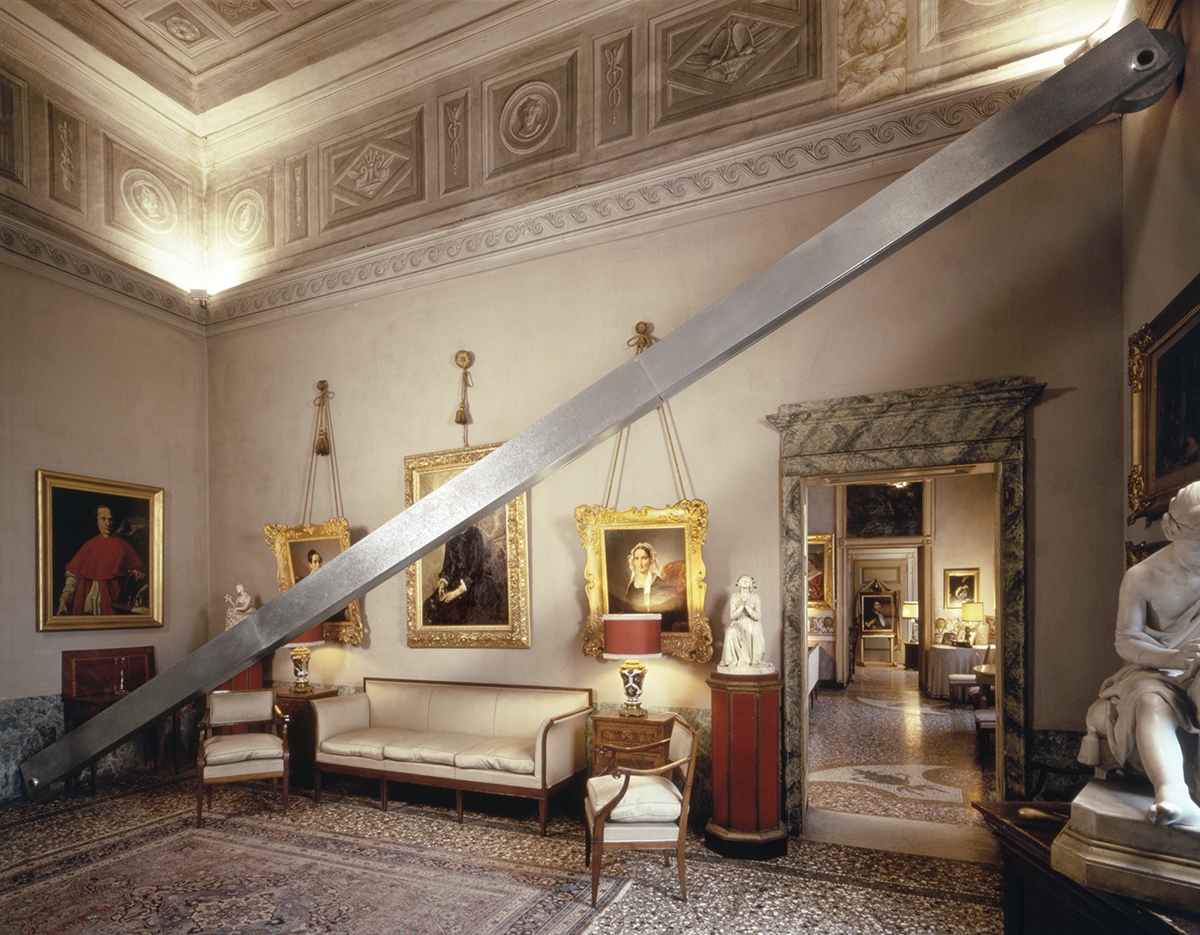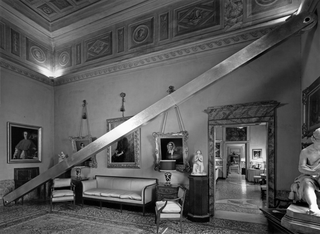Beams and Telescopic Handlers
From a static point of view, in the structural element “beams”, the tie points are strategic.
In the case of Cavenago’s “beams”, two wheels are mounted at the ends of the artifact to free the element from staticity.
The beams adapt to the space hosting them by connecting their extreme points, most often transversally, as in the installation in one of the rooms on the main floor of Palazzo Moroni, an ancient historical residence in the heart of Città Alta in Bergamo, where, among the precious furnishings and paintings in the collection, two opposite points in the room were connected by the work.
Unlike the “beams”, which have fixed dimensions designed for the exhibition space, the “Telescopici”, as mechanical devices, are composed of elements that slide into one another: a system of variable dimensions.
The result is a device that adapts from time to time to the space that contains it, the same work with its versatility can be installed in different spaces simply by adjusting the length.


Social
Contatti
umberto@cavenago.info